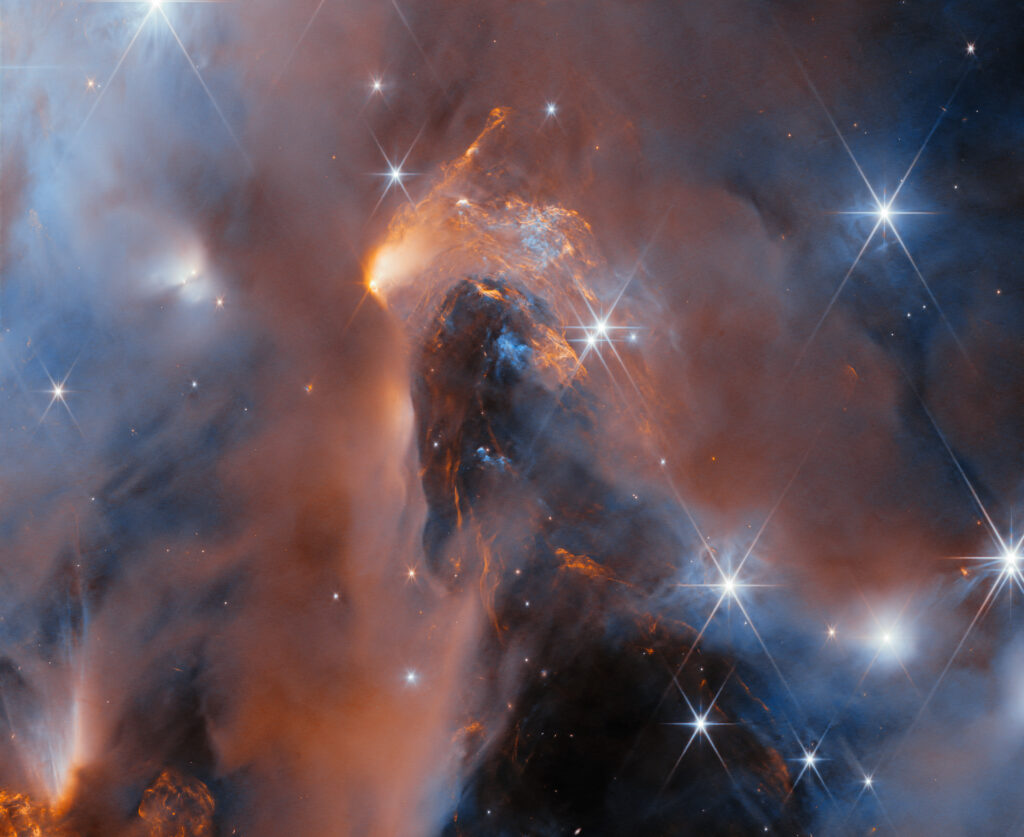Working with the James Webb Telescope (JWST) astronomers have surprised all space enthusiasts with another amazing image. It shows the nebula NGC 1333.

The NGC 1333 nebula is located in the Perseus molecular cloud about 960 light-years away. It was photographed last year by the Hubble telescope. However, it has only “ walked on the surface”. The fact is that this region is filled with a lot of dust, which blocks visible light. Fortunately, JWST is observing in the infrared, which has allowed astronomers to look into the heart of the nebula.
Large orange-colored spots can be seen throughout the image, which correspond to gas that glows in the infrared range. These are the so-called Herbig-Haro objects. They form when ionized material ejected by newborn stars in the form of jets collides with surrounding clouds of gas. This is one of the clearest signs of active star formation processes.
Many of the young stars in the JWST photo are surrounded by disks of gas and dust in which planetary systems may eventually form. In the right part of the image, the shadow of one of these disks, oriented with its edge forward — two dark cones emerging from opposite sides, against a bright background — can be seen.
JWST’s superior sensitivity also allowed astronomers to capture young objects with extremely low masses. Some of the faintest “stars” in the image are actually recently born single brown dwarfs with masses comparable to those of giant planets.
Our own Sun was born inside a similar molecular cloud about 4.6 billion years ago. It didn’t form on its own, but as part of a cluster that may have been even more massive than NGC 1333. The 1 to 3 million year old stellar birthplace photographed by JWST has given astronomers a look into the past to study how stars like our Sun formed, as well as brown dwarfs and free-flying planets.
According to Esawebb


